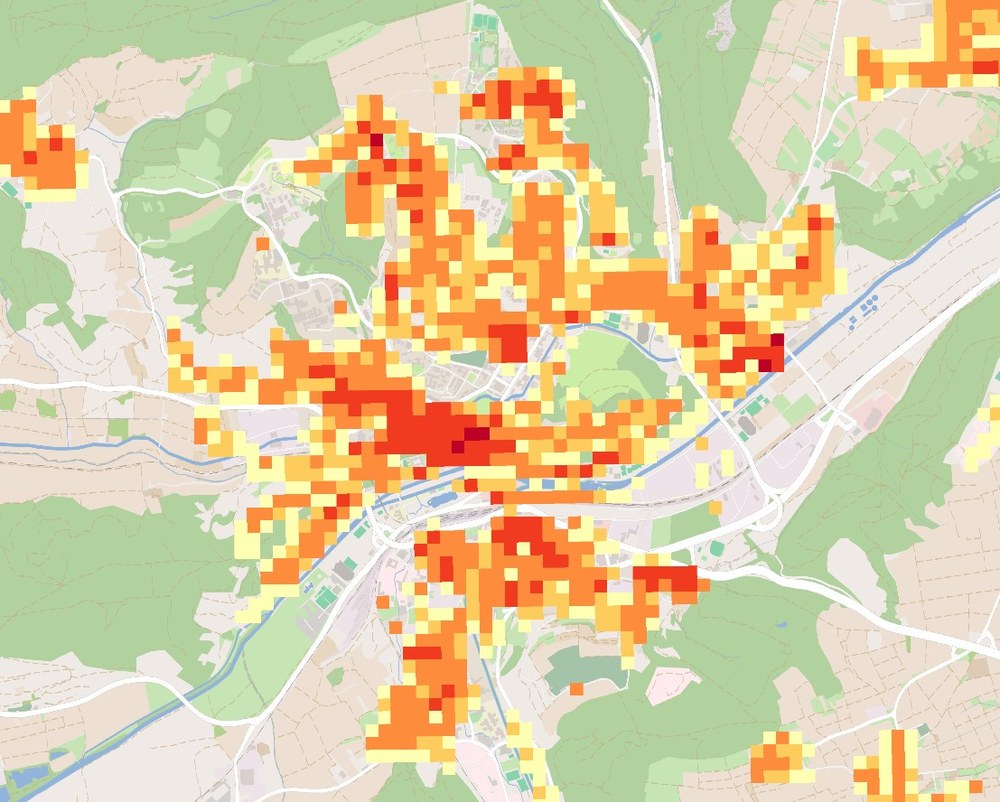Energy crisis – DLR quantifies energy-saving potential in the building sector for selected areas
The ongoing energy crisis and climate-neutral conversion of the energy economy has brought energy-saving measures sharply into focus. The building sector alone is responsible for nearly one-third of German energy consumption. This enormous potential for conserving energy was quantified with the help of EOC.
At both local and national levels there is a lack of freely accessible data on the energy consumption of buildings in defined geographical areas. Especially older, unrenovated buildings have a large energy-saving potential. The actual heating requirements of residential buildings depends on their year of construction and on other factors such as the climate situation and the type of building. The gap in data that has existed so far is being closed with the help of geodata.
Available digital models of all buildings in a defined area provide basic information on the surface area of the building lots, walls, and roofs. With this data a machine-learning methodology is employed to determine with high precision the building type and age. The process is based on a large number of calculated building-type features (such as surface area, circumference, height), on additional information gleaned from the list of buildings and flats compiled during the 2011 census, as well as on specific values for parameters associated with heating requirements for the various parts of buildings (from IWU - Institut Wohnen und Umwelt).
The parameters take into account three different renovation scenarios. The first assumes the original condition of the building according to the typical energy standards at the time the building was constructed. The second scenario assumes the minimal standards as defined in the 2014 energy conservation regulations and roughly corresponds to the situation today. The third assumes the best available insulation standards specifying, for example, the energy efficiency for a passive house today.
Using this approach, a standardized heating requirement for all residential buildings in the German state of Baden-Württemberg could be calculated, totalling 68 TWh/a (Fig. 2). Assuming ideal insulation (scenario 3), this value could be reduced by about 31% down to 47 TWh/a, which demonstrates the enormous potential to reduce energy demand in the building sector. The methodology developed is suitable for use as a helpful planning instrument for selectively providing financial support for renovation and contributing toward achieving climate goals. It supports and complements the efforts of municipalities in planning their heating supply, such as the communal heating plans for Baden-Württemberg that become mandatory as from 2023. The result of calculations for Baden-Württemberg can also be accessed through the EOC Geoservice (Residential Heat Demand).
„ANSWER kommunal“ was financed by the Federal Ministry of Economic Affairs and Climate Action (BMWK) as part of the 6th Energy Research Programme. Project partners: German Remote Sensing Data Center (DFD), DLR Institute of networked Energy Systems, KEA Klimaschutz- und Energieagentur Baden-Württemberg GmbH.
Links
- EOC Geoservice: Residential Heat Demand - Baden-Württemberg, Germany
- Deep Learning-based generation of building stock data from remote sensing for urban heat demand modeling. ISPRS International Journal of Geo-Information
- Building types' classification using shape-based features and linear discriminant functions. IEEE Journal of Selected Topics in Applied Earth Observations and Remote Sensing
- Semantic labelling of building types. A comparison of two approaches using random forest and deep learning. 40. Wissenschaftlich-Technische Jahrestagung der DGPF, Band 29. Stuttgart


